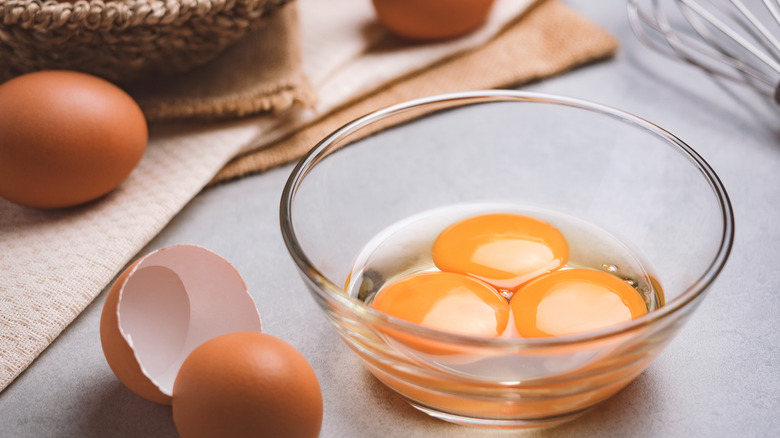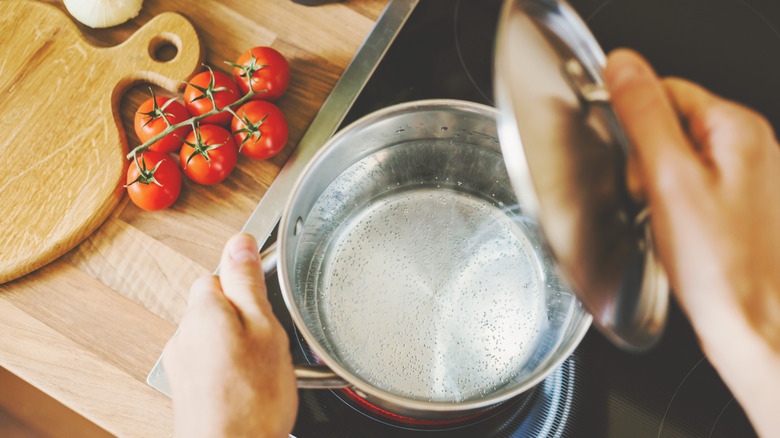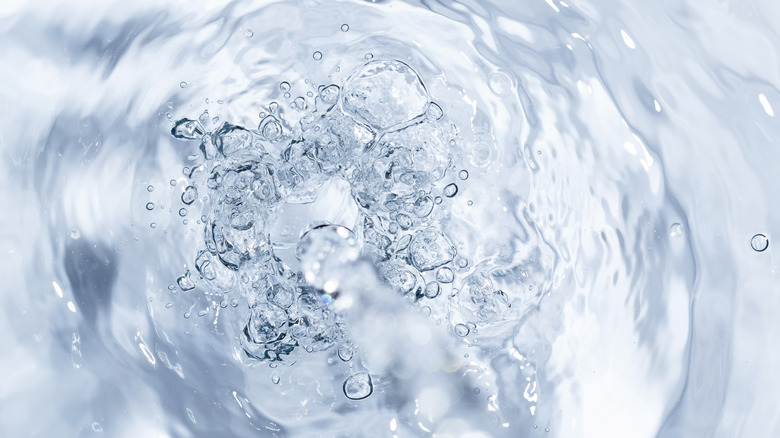The High-Octane Whirlpool Method Of Boiling Scrambled Eggs
The process of preparing eggs isn't business; it's personal. There might be just as many ways to make a simple egg as there are people on this earth, which is to say that everyone has their way of going about it. We're not talking about egg-focused recipes like Mediterranean shakshuka and Turkish mememen, but rather an egg on its own, be it scrambled, fried, poached, boiled, baked, or turned into an omelet. (Or, if you're a student of Alice Waters, cooked slowly over an open fire in a specialized copper-handled egg spoon.)
For proof of the endless ways eggs can go from carton to plate, just look at the historical significance of a chef's toque, whose folds may have once indicated the number of ways in which a chef can prepare an egg (per the Auguste Escoffier School of Culinary Arts).
And if you're partial to soft, silky scrambled eggs, you might want to ditch the skillet in favor of a more unconventional method.
Somewhere between poached and scrambled
When you see someone poising a raw egg over a vortex of simmering water, you might think they're about to attempt a traditional poached egg recipe. If cooked successfully, it will resemble a quivering ball of mozzarella. But if it's cooked unsuccessfully, it might resemble a murky mess of partially cooked whites.
But if you're Chef Daniel Patterson, whom Eater lauds at "one of the country's great modernist chefs," you're using that water to make a delectably soft scramble.
"He beats the eggs, cooks them quickly in a vortex of boiling water, then immediately drains them," writes Food & Wine, citing Patterson's recipe for poached scrambled eggs with goat cheese sauce. "The result is super-creamy, perfectly scrambled eggs." Like most egg-cooking methods, it's imperative to watch the clock. Food & Wine writes that Patterson's whirlpool method takes 20 seconds for a single egg and 40 seconds for four eggs.
Mastering the vortex
Per the Food & Wine recipe, which includes a creamy mixture of fresh and aged goat cheese and Parmigiano, Chef Daniel Patterson brings water to a simmer in a large saucepan. He beats the eggs in a bowl for 20 seconds, then uses a wooden spoon to stir the water "vigorously in a circular motion to create a whirlpool in the center."
When things look swirly, there's no time to waste. Patterson reduces the heat and swiftly pours the beaten eggs into the center of the vortex. He covers the pot and sets a timer for 40 seconds (or 20 seconds, if he's making a single serving).
When the timer goes off, he immediately drains the water and uses a slotted spoon to hold the eggs in place. He then carefully transfers the eggs to a strainer, lets them drain for 10 seconds, and seasons them with salt and pepper before following up with the cheese sauce and other garnishes. "This method requires a degree of blind faith," Patterson told The New York Times in 2006. Luckily, you're willing to engage in a little trial and error, breakfast is a pretty low-stakes affair.


